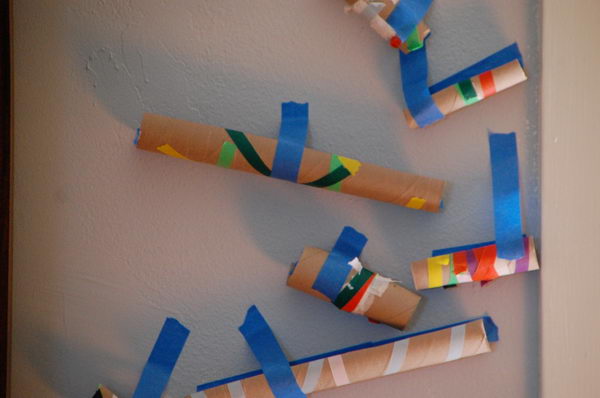Table of Content
The liquid flowing out will be progressively lighter in color due to less and less residual content left in the grain. My first incursion into home brewing was a pumpkin beer…and it was an abysmal failure. Now usually you’ll hear advice to start simple when it comes to making your own beer. It’s very sound advice, advice that I actually suggest to people starting out.
A blender will work, too, if you add a little water. Or you can simply mash it up with a potato masher, or move it through a potato ricer, or process it through a food mill. Avoid the large carving varieties of pumpkin as there is little meat and flavor in these kinds. Instead, look for the smaller pie and baking pumpkins, these are full of flavor and have more pumpkin goodness. Quarter and clean the pumpkin and bake at 350ºF for 30 minutes or until soft. Roasting the pumpkin will caramelize the sugars and break down the meat to bring more flavors out and make it easier to peel the skin off.
Butterbeer Recipe Variations
The only complaint was from one person who found it too sweet. Someone else thought it was like a Samuel Adams Boston Lager! Unfortunately I couldn't taste the pumpkin although some people said they could.
The reason is because you want to become familiar with the process and get a system of your own developed before you start adding in more intricate steps. However I don’t do simple, I dive right in usually. As a result my first pumpkin beer turned into vinegar. Peel off the skin from the pumpkin pieces until you have a big pile of the stuff. If you have a food processor, throw in a few chunks at a time.
Sign-up for recipes to your inbox
Since my carboy was almost completely full, I was worried the contents from the fermentation process would overflow beyond the mouth of the carboy. I fashioned a blow off tube with a drilled stopper, hollow rod, and vinyl tubing. The circuitous path also helps to prevent any wild cultures from entering the fermentation vessel. Ladle/ Small Saucepan – for scooping grains and liquid from the brew pot to the lauter tun. I use a small saucepan because all my ladles are too small.

You can get a lovely orange-colored ale with a delicious pumpkin flavor by boiling your pumpkin in the wild. Learn the process of creating your ideal beer from the brewers themselves, as Matt Czigler shares his knowledge. To make beer, first the grains are crushed and mixed with water to form a mash. The mash is then heated to convert the starches in the grains to sugars. The sugary liquid, called wort, is then transferred to a brewing vessel and boiled. After the wort has been boiled, it is cooled and transferred to a fermentation vessel.
The Pumpkin
The first step is to gather the ingredients you’ll need. In addition to pumpkin puree or pumpkin spices, you’ll need malt extract, hops, yeast, and water. There’s no need to wait until the fall to enjoy pumpkin beer—you can make it at home any time of the year. Pumpkin beer is a type of beer that is brewed with pumpkin puree or pumpkin spices. The spices used can vary, but typically include cinnamon, ginger, allspice, and nutmeg. To make a pumpkin beer, brewers typically start with a base beer, such as an amber ale, and then add pumpkin puree and spices to it.

The larger pieces will make the pastry extra flaky. Though Starbucks sadly discontinued its gingerbread latte a few years ago, it can still be recreated at home. Monin sells a popular gingerbread syrup to stir into lattes, which can be garnished with whipped cream and nutmeg. You will then be able to enjoy your homemade beer. The most difficult aspect is keeping an eye on the beer on a regular basis as well as its bottling.
To store in the freezer, spoon about 1 cupful of pumpkin into each plastic storage bag. Seal the bag with just a tiny bit of an opening remaining, then use your hands to flatten out the pumpkin inside the bag and push out the air. Substitute 7 lb, 10 oz (3.46 kg) of Maris Otter liquid extract and 2 lb of Munich liquid extract for the base grains. Steep the specialty grains for 20 minutes at about 155°F (68°C). Collect total boil volume, bring to a boil, and follow the recipe for hops and spice additions. Watch the video or read the instructions below to learn how to make pumpkin beer with real pumpkin.

A common technique is to dissolve the dry yeast in some water first to "rehydrate" the yeast. I have tried both pitching it straight and rehydrating it but I haven’t noticed a difference so I just pour it straight in. Measure out the grains you need and mill them if they aren’t milled already. The kernels should be broken apart but not ground so fine that they have become flour. Kernels that are not broken enough will not be extracted properly and kernels that are crushed too fine will lead to issues further on. Bottle Filler – mine has a spring which acts as a valve and only opens when pressed against a hard surface like the bottom of a bottle.
Starbucks’ Irish Cream is vanilla-flavored and can be made by frothing 1/4 cup 2% milk, 1 Tbsp powdered sugar, and 1/4 tsp vanilla extract. A mocha is just your standard latte, but with chocolate syrup . To make your own peppermint syrup, make a simple syrup with equal parts sugar and water. If you wait all year for red cup season, then you’re likely a fan of many Starbucks holiday drinks. If you learn them well enough, you can customize them or create your own form from scratch as you get more comfortable. Beer is made with ale yeast rather than lager yeast.
Then, transfer the steak to a plate and leave it undisturbed for some time. Dust your countertop, a cutting board or other work surface lightly with flour; make sure to use gluten-free flour, either an all-purpose blend or plain rice flour. It should be about 1-2″ wider than the pie plate. This allows the dry ingredients to fully absorb the liquid, and chills the butter back out after it’s been handled.
Pick your favorite mix, heat as directed with milk, alternative milks, or hot water with a splash of cream, and add a pump of peppermint syrup. Top with whipped cream and crushed candy canes or peppermint candies. This method does not require any additional equipment, because it only requires one fermenting process.


No comments:
Post a Comment